
Vol. II, No. 5, September 2024
Maximizing agritourism's profitability
Traditionally, value-added agriculture took raw agricultural commodities and transformed them in a way that gave them higher market value, usually into a product sold directly to the public, mostly at farm markets, and sometimes at farmers' markets or wholesale. Some value-added examples include wheat made into bread, fruits made into jams or pies, tomatoes made into salsa, milk into cheese, and apples into cider.
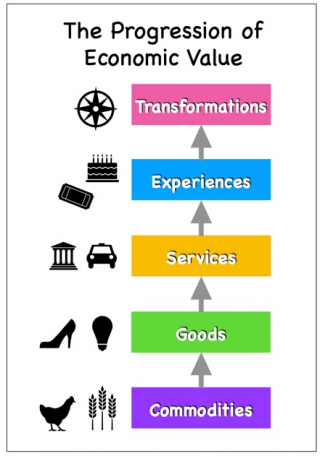
What happens with most value-added agriculture is it moves up what is known as the progression of economic value. The progression of economic value starts with raw commodities that are transformed into goods, which are then wrapped in services, then transformed into experiences, and finally into transformational experiences. Each level increases the total value to the customer and, accordingly, the total price the customer is willing to pay. Generally, price sensitivity decreases, profit margins increase, and competition decreases as you move up the progression of economic value.
We'll use apples as an example. At the first level of economic value, the apples are sold in a farm market. At the 2nd level of economic value, they're turned into goods, such as apple sauce, apple pies, cider, cider donuts, and maybe even hard cider. Based on the added value, these goods sell for a much higher price and usually have a higher profit margin than raw apples.
The 3rd level of economic value is to offer an apple food as a service. This can include serving customers a slice of apple pie in a farm market restaurant or a glass of hard cider in a cidery. The prices for these services are higher.
Now comes the next level of economic value, the 4th level, where farms turn apples into an experience. Crazy as it is, people will pay a farm to do the labor of picking the apples (the experience) with U-pick, also called pick-your-own (PYO). Most customers for U-pick, especially families with young children, don't come to U-pick farms to save money by harvesting a commodity. They come for the experience of both picking the produce and consuming produce that is local and fresh. People perceive the experience as worth more than just the value of apples they get. Recognizing this value equation, many U-pick farms now charge admission as well as for the value of the apples. Sometimes, the premium for the experience is built into the price U-pickers pay for the container they can fill with the apples. Sometimes, U-pick pumpkins are priced higher than supermarket ones since there is now an experiential value to them. By offering U-pick, farms command a premium price for the crops versus their commodity price.
Another example of turning an apple into an experience is instead of just selling caramel apples at a Fall festival, allowing customers to dip their own. And, of course, there are the apple cannons.
A corn maze is one of the best examples of raising a commodity's value to an experience. A farmer might sell 5 acres of corn as a commodity for $6,000. Turn it into an experience by charging people maybe $10 to get lost in a 5-acre corn maze, and 15,000 admissions will result in $150,000 of revenue from those same 5 acres, a 2,500% increase in revenue.
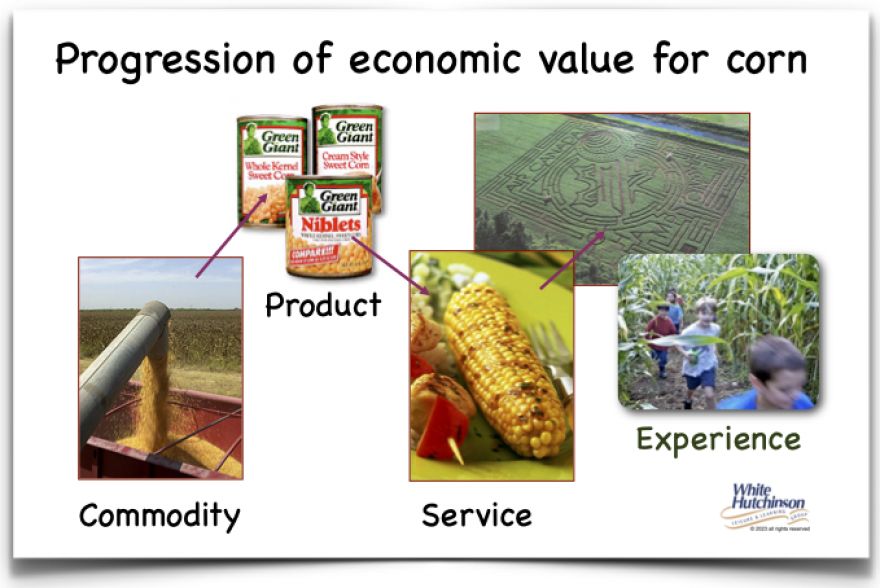
Some agritourism farms are learning to tap into a 5th level of economical value, transformational experiences. These have an even higher appeal and come with higher revenues and profitability than the 4th level. Transformational experiences are experiences that make you a better person. For apples, an example would be an apple pie cooking class. The attendees might even first pick the apples they're going to use. In a farm market, apple tastings where staff explain the heritage and differences of the apples is another example of a transformational experience. It will also raise the perceived value of the apples for sale and introduce customers to buying new varieties.
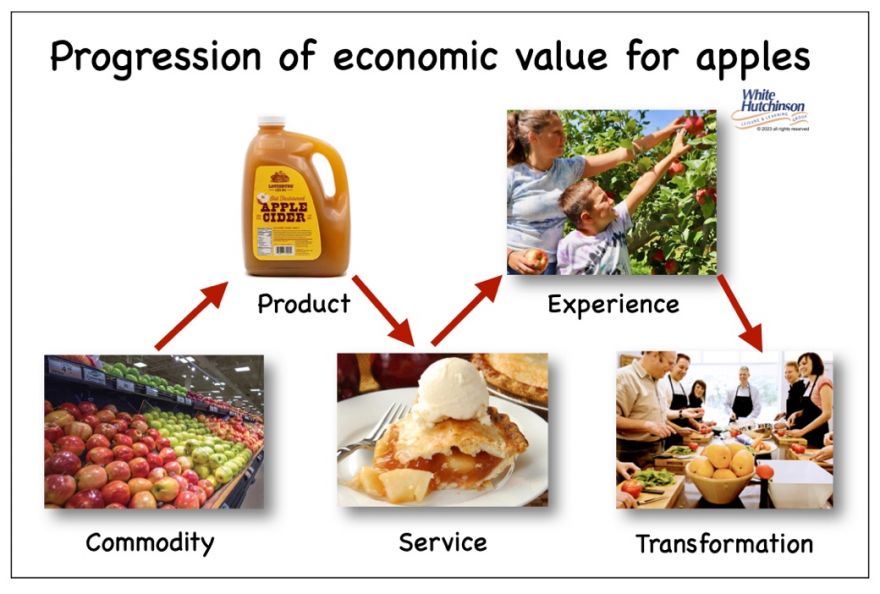
Other examples of transformational experiences include farmer-led farm tours, tours of a farm's cidery, and beer and cheese tastings from local producers. Having a hay wagon ride guide explain the farm's history and what people see on the ride elevates the experience to a transformational level.
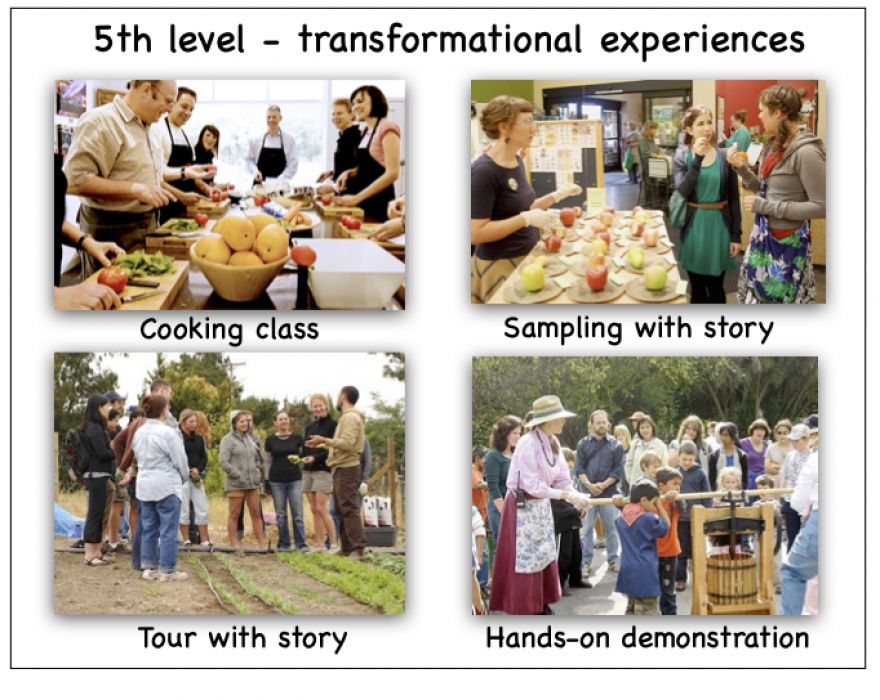
As Joe Pine and James Gilmore discuss in their book, The Experience Economy, experiences need to be "memorable events that engage each customer in an inherently personal way."
President of Unity Marketing, Pam Danziger, identified the trend toward transformational leisure experiences in 2005: "Powered by a feeling of entitlement, Americans bring a unique achievement orientation to how we 'recreate.' We want to accomplish something meaningful and measurable through our leisure pursuits. For more Americans, leisure and entertainment goals are to reach greater self-actualization."
Psychologist Abraham Maslow placed self-actualization at the pinnacle of the hierarchy of human needs. According to Maslow, self-actualization refers to"man's desire for fulfillment … to become everything that one is capable of becoming."
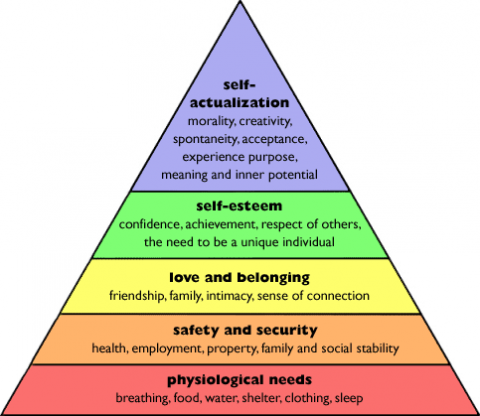
Maslow's hierarchy of needs
The 5th level of the progression of economic value and Maslow's hierarchy of needs place the greatest value on the same needs - transformational experiences that make you a better person rather than just buying things or enjoying non-enriching experiences.
There are many types of transformational experiences. One example is working out at a gym to be in better physical condition. Another area is learning new things of personal interest, such as a hobby. The popularity of beer, wine, and food festivals has been partially driven by people's desire to discover and learn about new foods and drinks.
"Today we are in the Experience Economy, with the Transformation Economy hot on its heals. You can stay in the elusory safety of past practices and keep doing the same things you've always been doing - in which case, mark my words, you too will be commoditized."
An example of the commoditization of agritourism experiences is corn mazes. In many areas of North America, they have become commoditized as so many farms now offer them. In some markets, the same thing has begun to happen with sunflower festivals.
A Pew Research Center survey found that 73% of adults are lifelong learners. Three-quarters of adults (74%) participated in at least one activity in the prior 12 months to advance their knowledge about something that personally interests them. These activities included reading, taking courses, or attending meetings or events tied to learning more about their interests. The survey found that adults with more formal education and higher incomes are likelier to engage in lifelong learning. It found that 87% of adults with at least a bachelor's degree participated in personal learning activities in the past year compared with 60% of those with high school degrees. More than 8 in 10 adults living in households earning more than $75,000 (83%) are personal learners, compared with 65% of those living in households earning under $30,000.
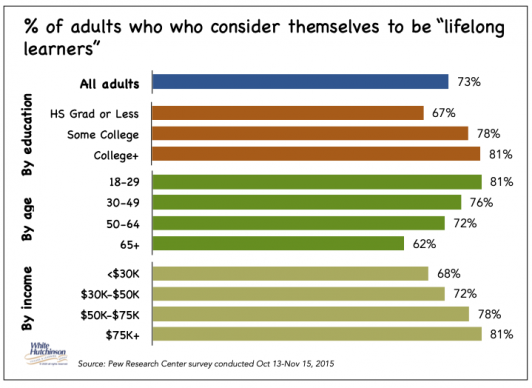

Lifelong learning is about pursuing transformational experiences and Maslow's fifth level of Hierarchy of Needs - self-actualization.
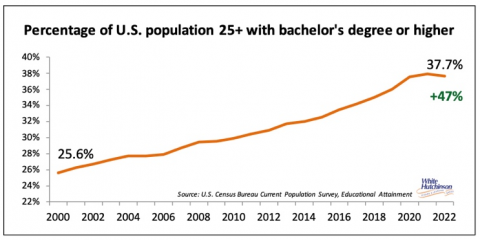
The increasing desire for transformational experiences is growing due to the rising education levels of people in America. As the Pew study found, lifelong learners, people seeking transformational experiences, are more likely to be more educated and better off financially. The percentage of adults age 25+ with a bachelor's or higher degree has grown to nearly 38% from 2000 to 2022. It is projected to continue to increase.
Lifelong learners are likelier to be younger, probably because a greater percentage of younger adults have higher education levels than older adults. The target market for most agritourism businesses, households headed by young adults, have the highest levels of education. In 2022, 40% of Americans 25-44 years old had a bachelor's degree or higher. That compares with only 31% for those 55-64.
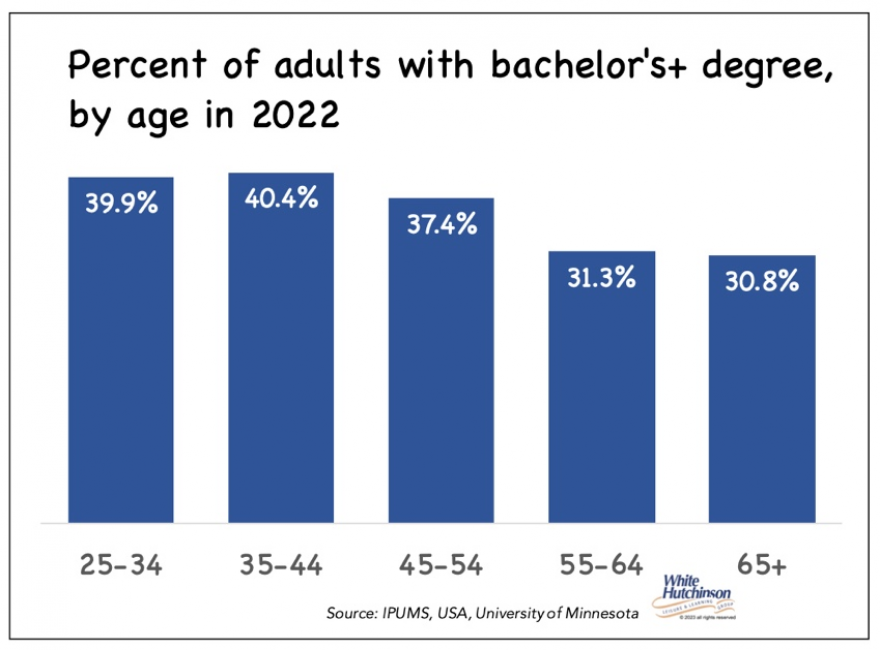
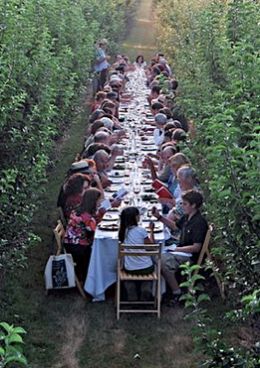
An example of a combination of the 3rd, 4th, and 5th levels of economic value might be a long-table dinner in an apple orchard where guests meet the farmer and learn about apple farming and the orchard where the dinner is being held. The chef who prepared the meal might explain some unique apple dishes. It's not unusual for people to pay $200 a person for this type of experience. The meal and drink might only be worth $100 if served in a restaurant. The other $100 of value is created by the unique dining experience and its transformational additions.
In addition to the economic value and profitability at the different levels of the progression of economic value, there's another dimension on how people value each level - the progression of time. With only 24 hours a day and seven days a week, 40+ hours a week for work, and 8 hours a day for sleep, time is an immenselylimited currency. Time wasted is to be avoided at all costs. Goods and services are about time well savedso a person frees up their time for other things. Instead of spending time making an apple pie, you buy it at the farmers' market and save time. Experiences are about time well spent. At the 5th level, transformational experiences, the progression of time takes on a greater value to time well invested, as transformational experiences, the improvement to either body or mind, lasts. Learning to cook a recipe that includes apples means you have the knowledge to enjoy the recipe for the rest of your life, a great return on the time you spent in the cooking class.
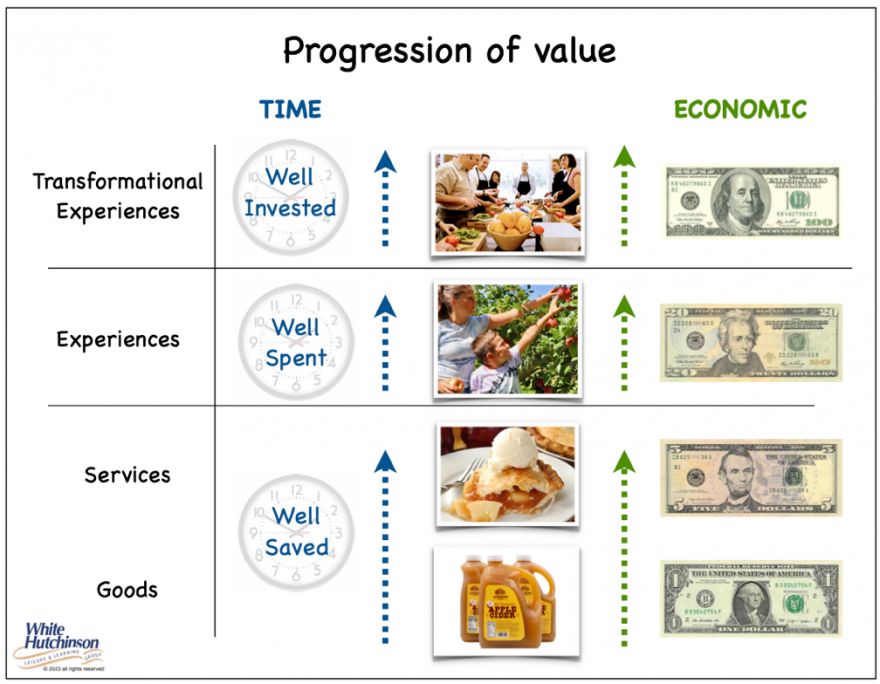
For many people, leaving home and visiting a particular leisure venue is more about using discretionary leisure time than spending discretionary money. In our time-pressed culture, the last thing people want to do is waste their leisure time. For that reason, to ensure it is worth their time, we see a trend of people choosing premium, higher fidelity, meaningful experiences when they do go out, even if they cost a premium in price. For higher socioeconomic consumers, who are the vast majority of the out-of-home leisure/entertainment venue market and are the most time-stressed, their time is more valuable than their money. It is better to part with more money to be assured of gaining the maximum value and enjoyment for time well spent or invested.
Higher socioeconomic households are the prime market for out-of-home (OOH) leisure and entertainment. Using pre-pandemic data as a normal, more than three-quarters of all spending on admissions to local OOH entertainment and art venues (76%) was by households headed by a person with a bachelor's degree or higher.
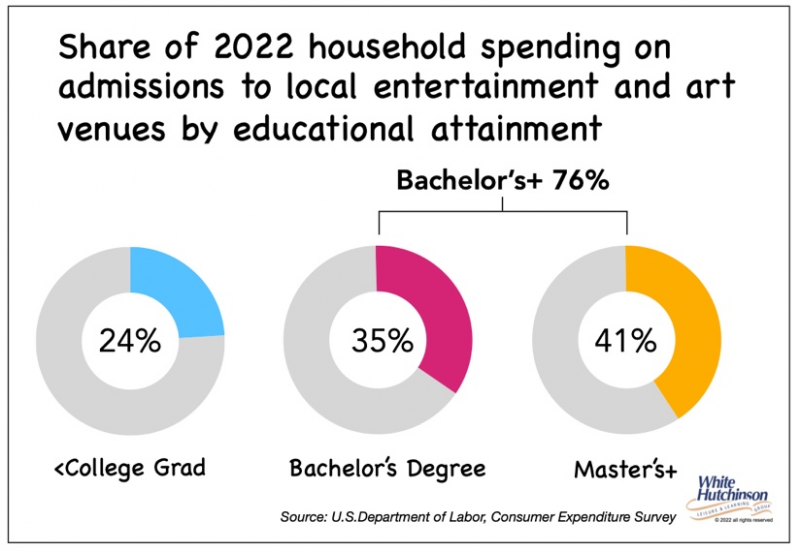
Households headed by a person with a bachelor's degree or higher are less than half of all households (46%), yet account for such a large share of spending on admissions to local OOH entertainment and art venues, 76%, as they are larger spenders than households without a bachelor's degree.
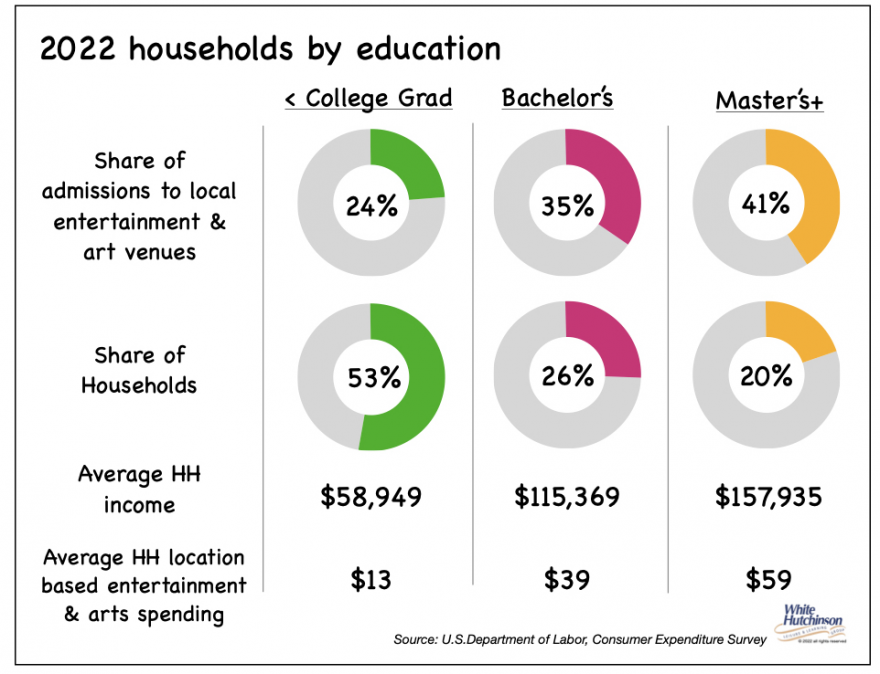
This is the population with the least leisure time (74 minutes less a day than a high school graduate), meaning they will definitely want to avoid wasting their leisure time and are most willing to pay to ensure it's well spent or invested.
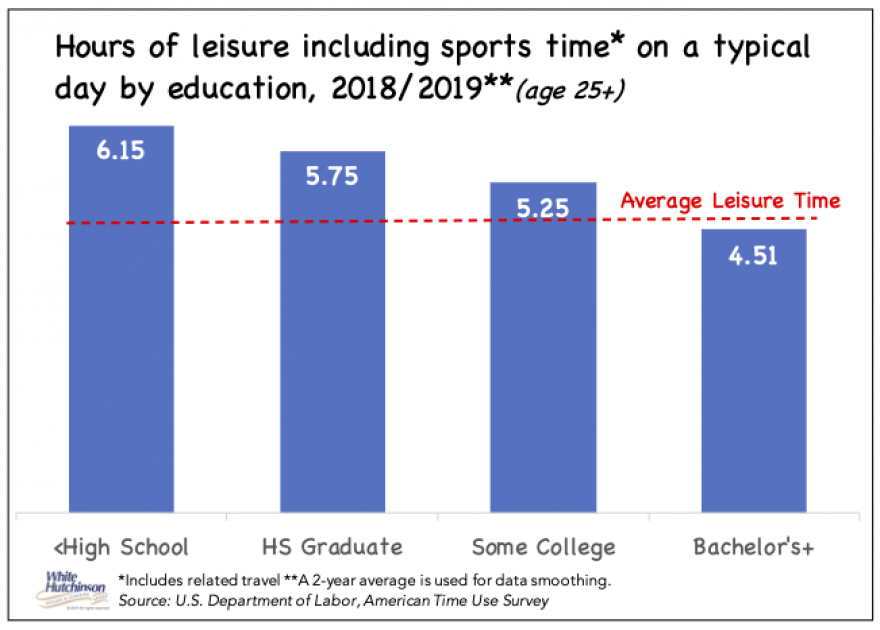
The PEW study found that this higher socioeconomic population has the greatest percentage of lifelong learners - 87%- meaning they are highly motivated to seek transformational experiences.
Agritourism farms and ranches can grow their businesses and profitability by making a paradigm shift by adding the offerings with the highest economic and time value - transformational experiences - to their current offerings of goods, services, and experiences.
Subscribe to Agritourism Today



